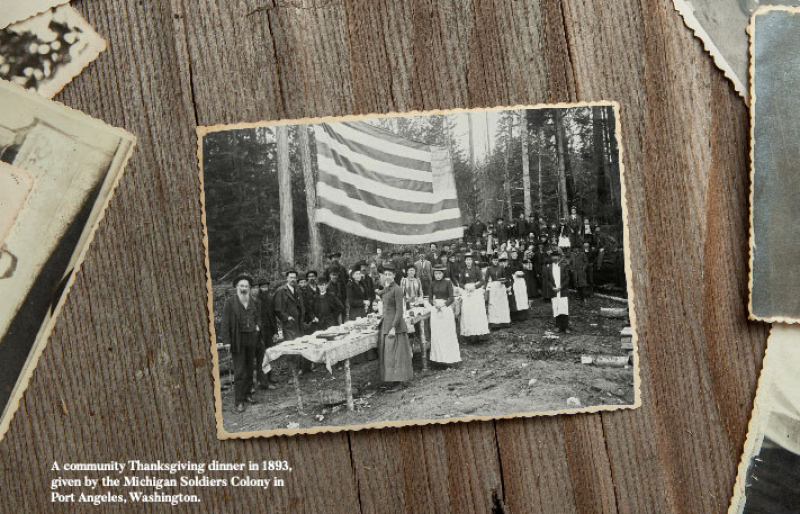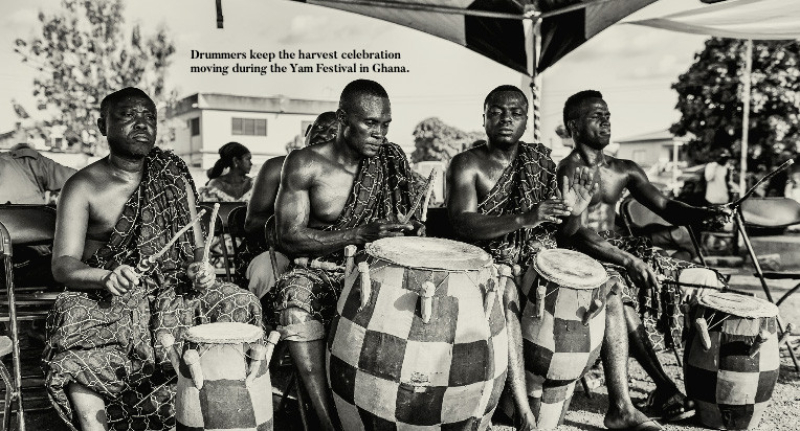Giving Thanks Across Cultures
From turkey and stuffing to moon cakes and yams, diverse harvest celebrations unite the world.

IN AMERICA CIRCA 2023, Thanksgiving may be the most familiar harvest celebration, but it’s certainly not the only one. Harvest celebrations have been an important part of human culture for nearly all of recorded history, and nearly every culture around the world has some way of celebrating when the harvest comes in.
The humble origin story of America’s Thanksgiving is well known – or at least the simplified, legendary version of the story. According to the legend, after Puritan settlers arrived in the New World in 1620, a particularly harsh winter decimated the colonists. Those who survived the starvation and the bitter cold of the New England winter were saved in the spring when two leaders of the Abenaki tribe, Samoset and Tisquantum (better known as Squanto), came to investigate the strangers. Squanto, who knew English, took pity on the settlers and took time to teach them how to grow corn and catch fish. That autumn, when the grateful settlers harvested the corn that would keep them alive through the next winter, they threw a party and invited their Native neighbors – and thus Thanksgiving was born.
One hundred and sixty-nine years later, President George Washington issued a proclamation designating a "Day of Public Thanks-Giving," and the holiday was brought into the public zeitgeist in America. Similar Thanksgiving holidays were instituted in other countries around the world, from Australia to the Philippines.
In the mid-to-late 1800s, when settlers crossed the country and settled in the agriculturally rich Northwest, they brought their Thanksgiving traditions with them. Many journals and letters of early Washington settlers mention the Thanksgiving celebrations in communities like Yakima City, Ellensburg, and Centralia.
In the years since, as modern farming has made harvests more reliable and less of a gamble, Thanksgiving has gotten detached from its agricultural roots. While the food on the table is usually fantastic, most people connect the holiday with a generalized gratitude and goodwill, more than with celebrating another successful harvest.
But throughout history, harvest has been the source of many feasts – and is often intertwined with religious rituals focused on giving thanks. The Romans had their Ludi Cereales, or feasts in honor of the goddess Ceres (from whom we get our word "cereal," which is an adjective applied to grains like wheat, rice, rye, barley, and corn). They also held a festival called the Vinalia Rustica, in which a priest plucked the year’s first ripe grapes and prayed a blessing over the rest of the crop. Ancient Roman scholar Marcus Terentius Varro once said, "On the gates of Tusculum, there is the inscription: The new wine shall not be carried into the city until the Vinalia has been proclaimed."
In China, the Mid-Autumn Festival, known as the Moon Festival, has been observed for more than 3,000 years. The holiday is marked by family reunions and eating mooncakes, a traditional pastry filled with various sweet or savory fillings. Towns and homes are decorated with lanterns of all sizes and shapes – symbolic beacons lighting the path to prosperity and good fortune. The purpose of the festival is to gather with family and friends, to give thanks for the harvest, and to pray for good fortune.
India’s Capricorn Festival is celebrated under different names throughout the country. During the three-day festival in January, celebrants go from house to house, singing and asking for treats. Some go to sacred rivers or lakes and bathe in a ceremony of thanks to the sun. Some fly kites or light bonfires, and feasts are held in each community.
The Ewe people of Ghana celebrate the end of the rainy season and the first appearance of yams, a staple crop. The duration and exact days of the Yam Festival vary according to place, but, regardless of the manifestation, the festival is held in hopes of averting famine in the coming year. Huge feasts and activities such as dances and parades are held.
The Sukkot festival in Israel celebrates the harvest and recalls the time when the Israelites wandered the desert living in temporary shelters. Temporary huts, called sukkah, are built for each family to eat and sleep in over the course of seven days as they feast, gather together, and express thankfulness.
"Harvest Home," also known as "Ingathering," is a harvest festival that has been traditionally held in England, Ireland, Scotland, and Northern Europe. According to Brittanica, "Participants celebrate the last day of harvest in late September by singing, shouting, and decorating the village with boughs. The last sheaf of corn (grain), which represents the spirit of the field, is made into a harvest doll and drenched with water as a rain charm. This sheaf is saved until spring planting. The ancient festival also included the symbolic murder of the grain spirit, as well as rites for expelling the devil." Churches have historically played a significant role in these Ingathering celebrations, wherein people bring baskets of freshly harvested produce to decorate the church altar. The food is then distributed to the needy.
And, of course, long before any European settlers arrived, many Native American tribes had some variation of a "Green Corn" festival to celebrate the harvest each year. Before the festival, participants must go and make peace with anyone with whom they have had disagreements in the prior year. A period of fasting and prayers leads to a time of dancing and a shared meal.
The practice of pausing for reflection and gratitude at harvest time is nearly universal. As you and your loved ones gather this Thanksgiving, remember that you’re participating in an integral part of human culture that is nearly as old as the world itself!



